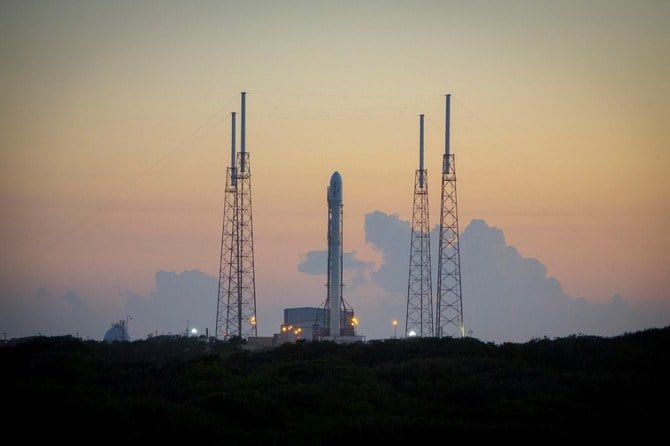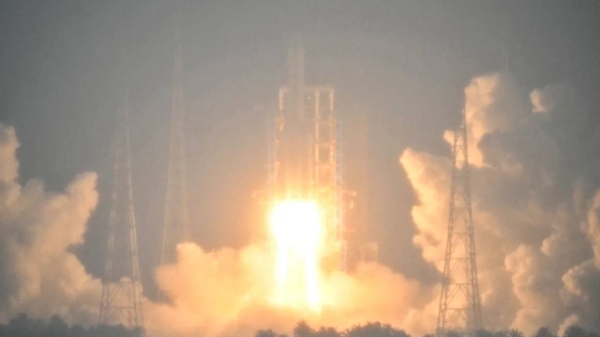
For more than 40 years, the US Air Force never had to shoot down any aircraft or objects over North America. Over the last two weeks, however, it has shot down four. As the topic burst onto social media, the conversation moved away from the possibility of other countries being involved and went on to fantasize about an alien invasion.
The initial silence of the Air Force was understandable as the operation was still unfolding. Yet, none of the exchanges on social media were speculating about whether it was, for example, Russia that was involved, especially with the object in Alaska, but were instead in a frenzy that these UFOs were potentially our first contact with extraterrestrial beings.
Obviously, it was not aliens. Rather, it is the start of a new age of astropolitics. The geopolitical tensions witnessed on Earth are now being launched into space. Space was, until recently, an area of collaboration among nations. It is now shifting toward an extension of the confrontations witnessed on Earth. And so what is valid on Earth is becoming valid in space. This means that friends and foes alike are starting to maneuver. Yet, in space, there is no East or West and no demarcation lines.
One may ask why is space important? The first answer is that, on the purely intelligence and military side, satellites provide valuable information and actionable insights. It includes navigation, communications and the detection of military assets on Earth, as well as in the skies and in space. The first object visible to the US was a case in point, as it was allegedly a surveillance balloon that could gather key information. And so today, beyond radars, there is a full area of assets that support these activities. As a quick recap, stratospheric surveillance balloons can fly at an altitude of between about 20 km and 45 km. Low Earth orbit satellites are at a maximum of 2,000 km, but can range down to 160 km.
Space is becoming just like Earth — an area for commercial competition as well as military confrontation
Khaled Abou Zahr
Space is obviously more than just an area for surveillance and military operations. The infrastructure that is being put in place is also empowering a great number of new commercial applications. For example, all the apps on your mobile phone that require geolocation are enabled by this infrastructure. Also, new satellites are empowering activities on Earth that can support, for example, mobility, insurance and agriculture. The capacity to track assets via the internet of things is also something to consider. And, so, space is becoming just like Earth — an area for commercial competition as well as military confrontation.
Nevertheless, space is not an unregulated area; there are rules that both governments and the growing private commercial enterprises need to respect. However, there is no real way of enforcing the regulations against a rogue actor. Many analysts expect that these tensions will become clearer once settlements start being founded on the moon. Indeed, unlike in orbit, on the moon there will be a sense of borders as well as of property. It will also be on a first come, first served basis. In order to avoid this and to build on the Outer Space Treaty, the US launched the Artemis Accords to promote collaboration and transparency for activities on the moon.
One now understands why countries are looking to maintain their sovereignty regarding space activities, from launch capacity to managing and developing their own space assets. It is an extremely costly and challenging task. Yet, to understand better the risks and why countries need to be prepared for these new scenarios, just imagine if a malevolent actor destroyed the Global Navigation Satellite System or Global Positioning System. The impact would be catastrophic and losses in the billions. These satellite networks, along with the communications networks, are now the backbone of not only surveillance but also commercial activities.
And this is why the risk of more and more spacecraft or flying objects becoming weaponized is now increasing. Assets in space have become a potential target in any confrontation. And there will be an increase in anti-satellite weapons, which is why Russia destroyed one of its own satellites in 2021, shortly before the war in Ukraine started. This came as tensions were growing and cooperation on the International Space Station was brought into doubt. Indeed, the stratospheric balloon that was destroyed above US territory could be weaponized instead of being for surveillance. This puts forward the need to create redundant networks, as well as to protect assets and people on Earth and in space. There must also be the capacity to retaliate in the case of an attack on these assets.
Last Wednesday, 16 Allies from NATO, together with invitees Finland and Sweden, launched a new initiative to gather and use data from space. It will provide intelligence, surveillance and essential support to NATO’s military missions and operations. Called Alliance Persistent Surveillance from Space, it is an important element in the implementation of NATO’s Overarching Space Policy, which was adopted in 2019. If it only includes surveillance today, there might be a need to develop a space military alliance to protect against rogue actors. And as people on social media focused on aliens last week, they can, just as in the movies, imagine that this potential space alliance will protect the Earth against an alien invasion.
Khaled Abou Zahr is the founder of Barbicane, a space-focused investment syndication platform. He is the CEO of EurabiaMedia and editor of Al-Watan Al-Arabi.












